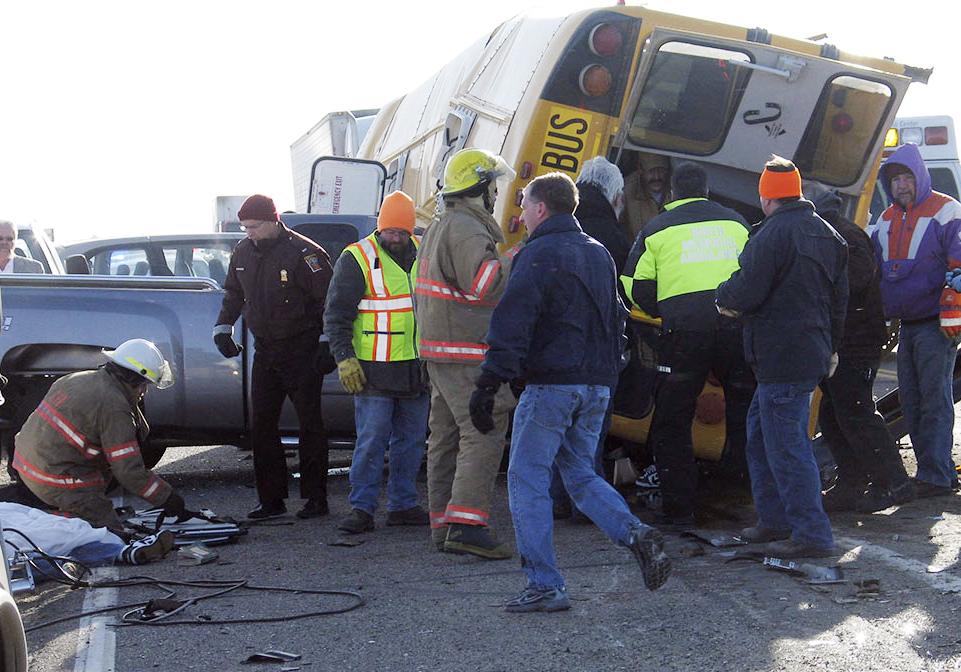
More than seven years ago, four young people were killed and 17 were injured in Cottonwood, Minn., when Olga Franco blew through a stop sign and slammed into their school bus.
She’s in prison now but a case decided at the Minnesota Supreme Court today reveals that some survivors of the crash are still paying a price.
Franco not only didn’t have a driver’s license, she wasn’t covered by the insurance on the minivan she was driving.
A special master determined that the total damages for the victims was $5,302,800. But the school bus company’s coverage for damages from an uninsured motorist didn’t come close to covering that.
In one case, that of Cody Sleiter, his $140,000 in damages was only covered for about $35,000.
So Sleiter sought additional benefits — $65,000 — under his family’s own auto insurance coverage for uninsured motorists, but American Family rejected the attempt, citing state law that Sleiter’s damages of $140,000 did not exceed the $1 million coverage available under the school bus company’s policy, even though that amount had to be split among all of those injured on the bus.
Sleiter’s family sued and lost at trial, but the Minnesota Supreme Court was asked to decide what is the amount of the coverage available: the total amount to all the victims, or the amount recovered by a single victim?
Today the court sided with Sleiter.
“The coverage available from the UIM (uninsured motorist) proceeds was inadequate to fully compensate all of the injured passengers,” Justice Alan Page wrote in his opinion (pdf). “Thus, in accidents involving a large number of injured passengers, Sleiter’s reading of ‘coverage available’ is the more natural reading because it is more consistent with the legislative purpose of preventing injured passengers from being undercompensated.”
“American Family’s interpretation, while reasonable in the context of a single-victim accident… is unreasonable in the context of accidents involving multiple injured passengers,” Page said. “American Family’s interpretation leaves victims insufficiently compensated for their injuries and unable to access the coverage limits they purchased.”
That brought a dissent from Justice David Stras, who acknowledged Sleiter’s case is “tragic” and that he and his family did not receive proper compensation for his injuries. But he shouldn’t have under state law, he said.
“Inexplicably, however, the court simply refuses to look to the statute’s first sentence, which answers the precise question posed by the court of how to identify the limit of the coverage available from the occupied vehicle in an accident involving multiple victims,” Stras said.
This is the first sentence of the law:
If at the time of the accident the injured person is occupying a motor vehicle, the limit of liability for uninsured and underinsured motorist coverages available to the injured person is the limit specified for that motor vehicle.
“It is quite a logical leap to hypothesize, without any objective evidence, that the Legislature failed to consider the exceedingly common situation in which a car accident results in injuries to multiple people,” Stras wrote.
As for Sleiter, he’s grown up now. He graduated from Lakeview High School in 2012 and is an agriculture business major at Southwest Minnesota State University.
